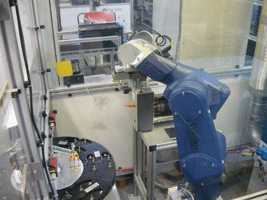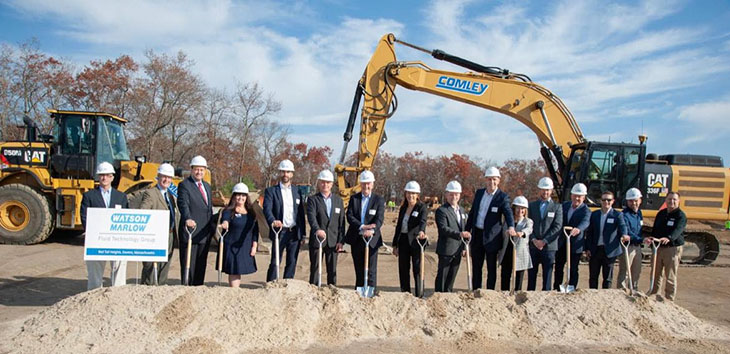Automation is critical to staying competitive in the manufacturing industry. Manual processes cannot keep up with robotics’ efficiency and accuracy — especially amid labor shortages — but many manufacturers also encounter challenges when automating. Remote industrial robotic control can help.
Despite robots’ advantages, they come with unique obstacles some manufacturers may not feel equipped to manage. As a result, some facilities struggle to achieve a substantial return on investment for their automation initiatives. Remote control systems can change that by making the most of robots’ significant advantages while mitigating their biggest challenges.
Improved Safety
Safety is one of the most important benefits of remote robotic control. Robots should make workplaces safer because they can automate the most dangerous tasks to minimize the hazards humans face. However, large, mobile machines pose their own risks to workers.
A 2019 investigative report found injury rates nearly quadrupled in some facilities after implementing robots. Employees can run into or get caught in the moving parts of these machines, and robots’ agility can pressure workers to work too quickly to be careful. Remote control offers solutions through distance and cooperation.
When employees can operate machines remotely, they can maintain safe distances from moving parts and heavy loads. Controlling bots remotely lets manufacturers safely steer machines around and away from incoming employees. Workers can also shut off equipment in an emergency more easily if necessary to prevent accidents.
Increased Productivity
Another benefit of robotic control is it improves workplace productivity. Efficiency is one of robots’ key selling points, but some facilities struggle to achieve it because of obstacles in controlling or monitoring these machines. If workers must travel across the facility to check on or adjust a robot, those adjustments will take a lot of time.
The average warehouse operator walks roughly 10 miles a day, representing a considerable block where they’re not performing value-adding work. If workers could see all the data they need over a robot or adjust its operation remotely, they would not have to walk as much. This work would then take significantly less time, letting them move on to more valuable tasks.
This productivity boost is significant because it translates into quicker ROIs. As a result, robots as a whole become more accessible to manufacturers.
Addressing Labor Challenges
Robotic systems are also supposed to mitigate labor shortages, but ironically, many manufacturers face robotic skills gaps. Managing these machines effectively requires a high level of technical knowledge and 80% of industrial employers need help to fill skilled technical vacancies.
Remote industrial robotic control helps by expanding the available workforce. When workers can monitor, control and adjust robots from anywhere, employers do not need on-premise employees to manage them. They can turn to remote work instead, taking their talent pool from local to global.
Manufacturers in the U.S. can hire robotics workers in Taiwan to monitor or troubleshoot robots according to real-time data to ensure they work efficiently. On a smaller scale, a facility in one state can hire workers in another within the same time zone to control robot arms remotely when no in-state experts are available.
More Human-Robot Collaboration
Similarly, remote control makes human-robot interactions easier and more productive. The resulting safety improvements allow manufacturers to have cobots and employees in the same workspace without fear of accidents. When more humans can monitor and control robots, they can adjust them to workers’ needs that they are familiar with, enabling better cooperation.
This human-robot collaboration is often more efficient than entirely manual or automated workflows. Manufacturers can pair robots’ speed and accuracy with human workers’ flexibility, ensuring their facility is efficient and can adapt to unexpected changes.
Closer human-machine collaboration can also mitigate workforce fears over automation. Reports that AI can automate 50% to 70% of human jobs can make workers uneasy. Working with human-operated or monitored robots instead of seeing robots take over their roles can assuage those worries.
More Effective Maintenance
Even when operators do not control robots directly, being able to monitor their operation remotely is beneficial. The biggest advantage in this space is the ability to track robot maintenance needs without being physically present.
Remote monitoring can alert maintenance technicians as soon as any operating factors near unusual conditions. They can then check on the robot remotely to determine the issue and inform more timely and effective fixes. If nothing is wrong, they save time and productivity by not traveling to the machine or taking it offline.
Expenses and lost productivity from maintenance cost manufacturers $220 billion annually, but manufacturers using predictive maintenance experience 18.5% less downtime. Predictive maintenance relies on remote access, so implementing remote robotic control is a crucial first step.
How to Make the Most of Remote Industrial Robotic Control
Like robotic technology, remote robotic control requires the proper implementation to work effectively. Every facility’s situation is unique, but generally speaking, it is best to start on a small scale and slowly expand to more robots to maximize returns.
The most time-consuming or error-prone processes are the best candidates for automation, and the same applies to remote control. Manufacturers should review their robotic systems to identify which one they struggle with the most. If any are particularly hazardous, inefficient, or face frequent maintenance or control issues, they are ideal starting points.
Manufacturers should also compare available robotic control solutions compatible with the robot in question. The best solution likely varies depending on the facility’s specific needs. To find it, review the company’s budget, experience level, technical requirements and goals. Comparing these to a control system’s price, user friendliness, use cases, third-party support and compatibility will reveal the best way forward.
While manufacturers are implementing remote control systems, they should monitor how they affect safety, efficiency and costs, considering how easy it is to set up and use. Successes and failures here can inform more effective expansion in the future.
Robots Need Remote Control
Remote industrial robotic control makes robots safer, more efficient, reliable and cooperative. Those improvements mean manufacturers who previously struggled with robotic systems can achieve their most impactful benefits.
As automation grows in the manufacturing industry, learning to use robotics effectively will become increasingly important to remain competitive. Remote control offers a solution, which could be the change some manufacturers need.

























